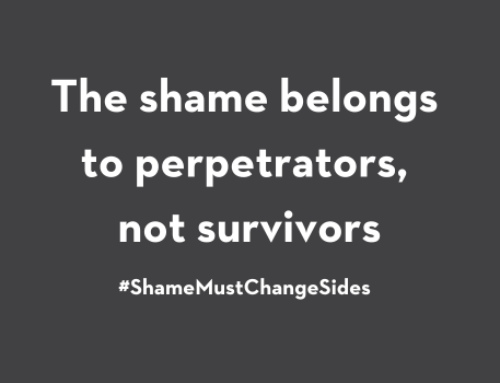The COVID-19 pandemic has been linked to spikes in domestic violence reports and crisis calls in China, France, and the U.K. In Canada, service providers have also observed increases over the past few weeks. For example, the Ontario Association of Interval and Transition Houses says 20 per cent of the 70 shelters it represents have had increased crisis calls, and some police services are noticing more domestic violence reports.
This is not unexpected – it echoes what has happened in past disease outbreaks.
Domestic violence is a form of gender-based violence that often plays out at home. It includes intimate partner violence, sexual assault, emotional abuse, child abuse, and elder abuse. Women, girls, and trans and non-binary people are at highest risk of this kind of victimization.
We explore why COVID-19 is linked to more gender-based violence on our new podcast. Listen on Spotify or here.
Rates of gender-based violence were high in Canada, even before the pandemic: on average, every six days, a woman is killed by her intimate partner. Thousands of women, girls, and trans and non-binary people now face a heightened risk of violence at home with COVID-19 isolation measures. One in 10 women is very or extremely concerned about the possibility of violence in the home, suggests a Statistics Canada survey about COVID-19. And those living with abusers must hurdle new obstacles to escape violence and to reach out for help.
But Why is Gender-Based Violence on the Rise?
The Center for Global Development points to pandemic-related stressors that can lead to increased violence against women, such as job losses and reduced income, food insecurity, fears about contracting the virus, exacerbated mental health issues, as well as disrupted routines and services that families rely on. Quarantines and social isolation mean that abusers and those they harm are in close proximity around the clock and other people aren’t around to see the signs of violence and intervene.
Of course, many of us are facing these stresses and we aren’t responding by abusing those closest to us. Violence is not inevitable. Where risk factors of gender-based violence at home already exist – like a sense of control, possessive jealousy, and misogynistic attitudes – “pandemic triggers” can bring them to bloom.
And even though this violence is not inevitable, its risk factors are simply far too common in our society. Again, our baseline rates of violence before the pandemic were already unacceptably high.
Service Provider Perspectives
Service providers are sounding the alarm all over Canada.
“Our concern is that the abuse could get more severe and intense, and that the usual things that women and children do to resist the violence – like going out, going to work, or going to a friend’s house – are not available to them,” says Gillian Weaver-Dunlop, Director of Client Services at Calgary Women’s Emergency Shelter.
The shelter’s programs are busier than usual and staff are worried about women’s abilities to safely exit violent situations. “Will they be able to get away if the abuser is always home, and are they going to take the risk of leaving, due to fears about COVID-19 and coming to a shelter?” While the federal government and the Ontario provincial government have announced emergency funding for women’s shelters and other services for those who experience gender-based violence, we know more funding is urgently needed. Services for violence prevention and intervention were already struggling to meet needs before the arrival of COVID-19.
And there are even more challenges now. Weaver-Dunlop says Calgary Women’s Emergency Shelter has had to move some of their services online and redeploy staff to “keep up with basic operations.”
Dara Rayner, Operations Manager at Anderson House shelter in Charlottetown, P.E.I., says they’re running into barriers like women not being able to view apartments because of social isolation measures and court procedures are being put on hold. “Anxiety levels in the shelter are very, very high, for residents and staff,” she says.
As essential services, shelter facilities have to implement more rigorous cleaning and sanitation procedures. Given that other services have had to cut back or close, shelters are stepping in to fill gaps. At Anderson House, Rayner says “the grocery bill increased drastically” because they can no longer accept food donations normally dropped off by community members. And they won’t be able to boost their resources through fundraising for some time as people and businesses are donating less as the economy slows.
What You Can Do
The path ahead of us looks daunting, but it doesn’t mean we can’t do anything about what’s happening. If you are able, please give to our Tireless Together Fund to make sure women and girls aren’t left behind in the COVID-19 crisis. Your contribution will help critical programs for diverse women, girls, and trans and non-binary people continue through the pandemic and into the aftermath.
Also, please promote the new Signal for Help campaign amongst your contacts and colleagues. The signal is a simple one-handed sign someone can use during a video call to silently show they want someone to check in with them in a safe way. It may help some people in violent homes reach out during this time of social isolation.
Learn more:
Women Leaders in COVID-19: Seen and Unseen
Women’s “Worry Work in the COVID-19 Pandemic
The Difficult Economic Side-Effects of COVID-19 for Women
The Gendered Impacts of Coronavirus
Photo: Adam Nieścioruk via Unsplash







